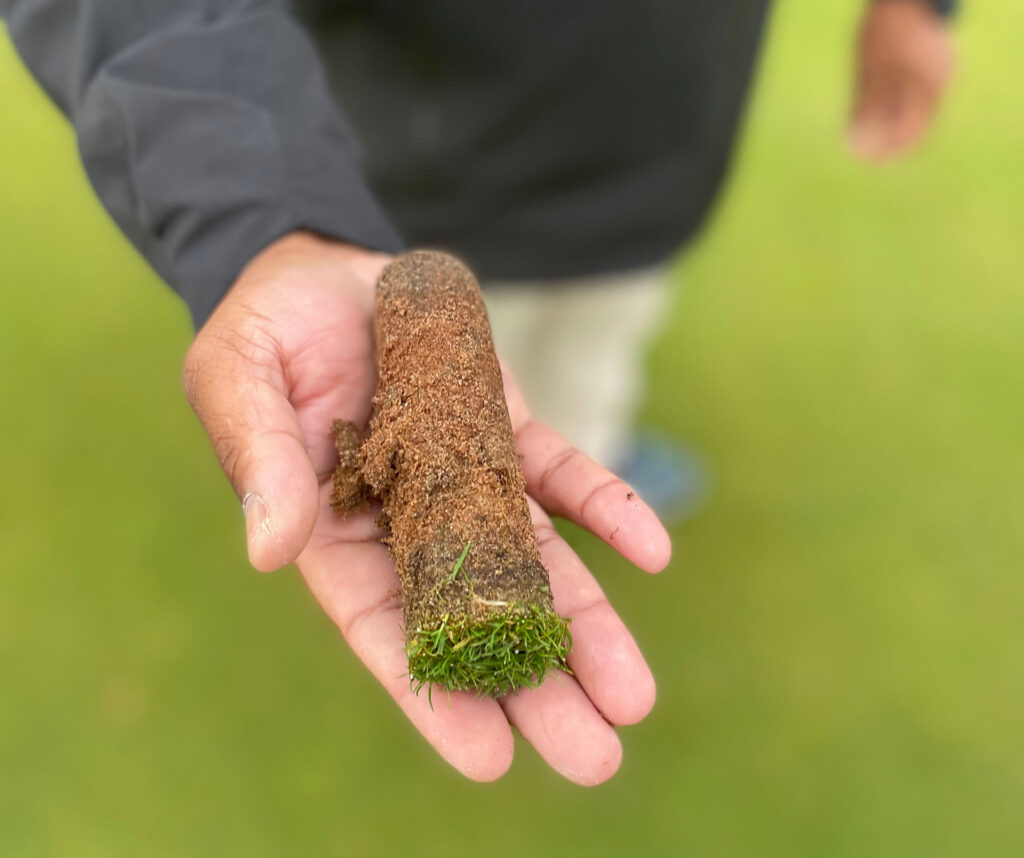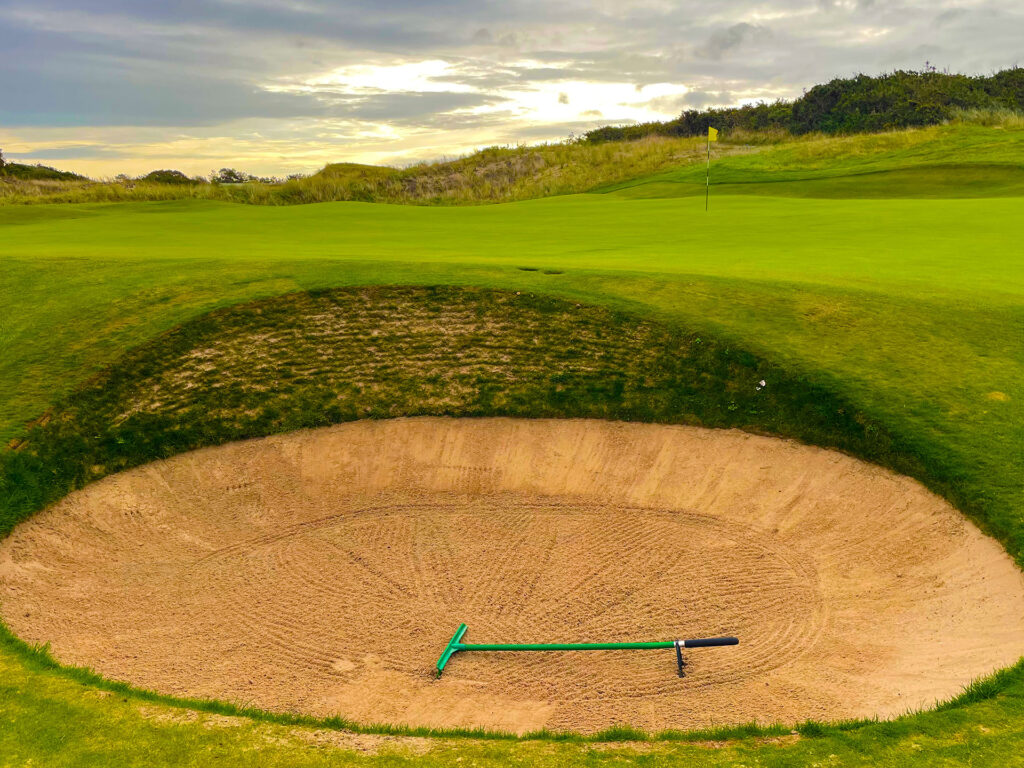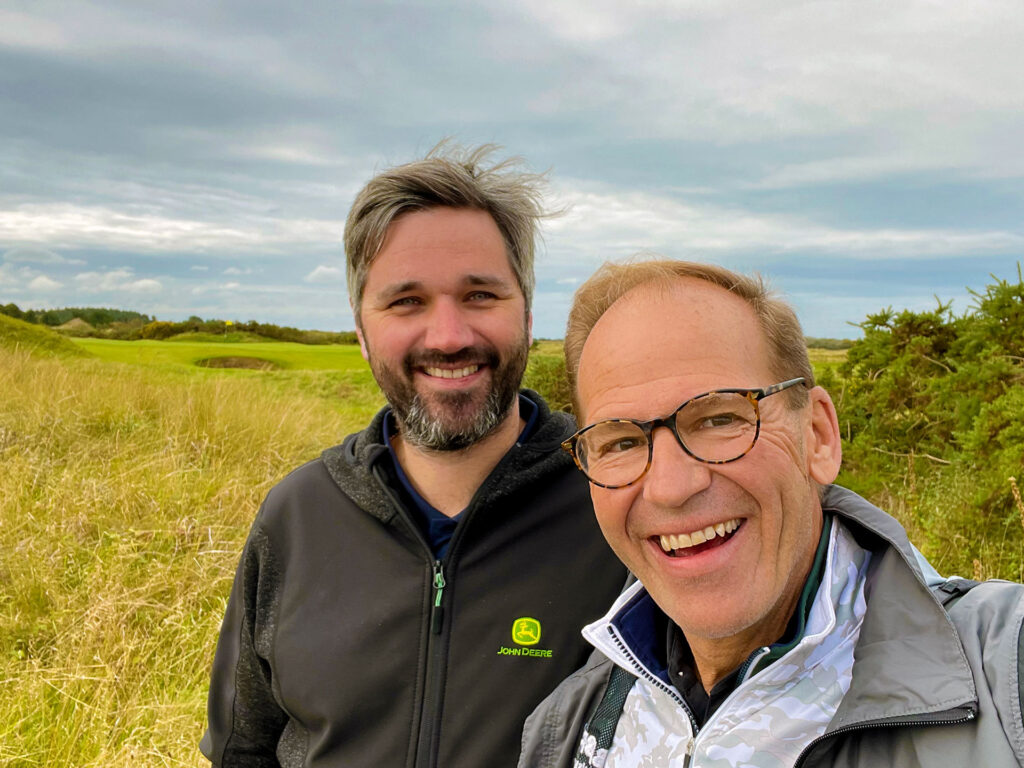Few courses are as exceptional as Birkdale and even fewer turfheads more genial than their new course manager, Sean McLean. Read on to find out more.
By Pat Jones
When you are just a few weeks into a new position, and you’re replacing a retiring turf legend in overseeing one of the world’s excellent links courses, you would think you might be concerned about having some Yankees show up and start asking questions.
Unless you are Sean McLean, the newly minted course manager at Royal Birkdale GC. He welcomed our On the Road with Aquatrols visit with open arms and gave us some insights into his plans for the course.
McLean came to Birkdale after a decade as course manager at Prince’s Golf Club in Kent. He got his start at Craigmillar Park GC in his hometown of Edinburgh. Still, a sojourn to America and Australia via The Ohio Program internships at Oak Hill CC, Southern Hills CC, and Huntingdale and Avondale supercharged his career opportunities.
It goes without saying that Royal Birkdale is a remarkable place. Designed primarily by Frederick Hawtree and J.H. Taylor, the club hosted the nine Open Championships in 1954. Greats like Palmer, Trevino, Miller, Watson, and Harrington have hoisted the Claret Jug there.
Birkdale hosted The Curtis Cup, The Walker Cup, and 2 Ryder Cups in 1965 & 1969. The 18th green was the scene of perhaps one of the most memorable displays of professional sportsmanship in the history of golf. During the final match of the last day of the heated 1969 Ryder Cup, Jack Nicklaus conceded a two-foot putt to opponent Tony Jacklin to halve the match and create the first tie in Ryder Cup history.
And now, as course manager, Sean McLean has become part of that tapestry. Here’s our conversation from late last year.
You seem giddy to be here.
It’s a bit like being a kid at Christmas, isn’t it? All these things are happening and all these new ideas. The team has been fantastic, particularly Rob Marchbank (his assistant), who’s been here for eight years. He’s helped me. He knows the site, and he knows what works. He made it easy for me to get my feet on the ground. I couldn’t wait to get started. We’ve already had initial meetings with R&A to get a quick start and build relationships with more key people in the golf community.
Your legendary predecessor Chris Whittle skillfully maintained Royal Birkdale. Are there any agronomic issues or things you want to address?
Nothing too serious. Organic matter in greens is an ongoing issue, but it’s probably the bunkering for me. The bunkers make this place, and they’re not quite as good as they can be. We’re doing an 18-hole review with (architect) Tom MacKenzie to upgrade the bunkers and consider a par-3 course. Member meetings are going on already to consider what’s being proposed.
Are you a turf nerd?
(Laughs) I wouldn’t say that. I like to know the detail and appreciate the science, but I understand there’s still an art to this job. Quite a bit of architecture is involved in what we’re doing too. I don’t get too caught up in details. It’s like the phone book: knowing the numbers is handy, but I don’t get lost in them because I know where I can find help.
What’s your general program like?
The surfaces here are pretty good. We’re just trying to refine them. There’s a high population of fescue and browntop bent in the greens. So we have a good base; from there, it comes down to refinement and grooming. We’re not struggling for coverage. It’s very similar to what I grew up with. The grass coverage is there, so we don’t need to change the composition. The goal is to keep on top of the (soil) moisture and organic matter.

Any fun little things you want to do?
We’re already working to replace shell cart paths with fescue/ Rye paths. The look and feel of grass paths are great, and they fit here.
What kind of blew your mind when you did significant events like the Open in the past?
Having too many people! You need people on standby but not that many. When we hosted tournaments in the past, I enjoyed the month before more than the week because there were just too many people there. You have like six guys out there stimping! I like being busy, so I don’t want people hanging about.
Our goal for the Open will be to have enough support but not so many people are just standing there. I just don’t want it to be overloaded, and I don’t want to change too much and do unnecessary things like hand-cutting rough. I kind of get it, but is that overdoing it? Probably.
You are not a social media person. Will that change now?
James Bledge (at Royal Liverpool/Hoylake) and others like him are legends and great at Twitter and such. I’m not really like that. I appreciate all that and like seeing people do it, but I don’t want to. I am excited about using a drone to take videos and photos to educate the members about what we’re doing.
You have a vision for doing research and education programs here at Birkdale. Tell us about that.
In the long run, I’d like to have something along the lines of a Birkdale “academy” with test plots and experts coming in and trying stuff under real-world conditions. I’m always looking to learn something new and find different ways to do things. We’ve got many places to do trials, and I’m a big fan of testing under real-world conditions.
I like this academy idea very much. I’ve always thought about it, but this is my first chance to do something like that. I loved The Ohio Program, and I believe interns could get a lot out of something like Birkdale academy. People can learn (agronomy and science) as they get that authentic experience.

Does it seem like there’s still a lack of formal education opportunities for aspiring head greenkeepers here?
It’s a very different educational environment than the states. I hope the R&A gets involved in taking it (education programming) to another level. If they put their accreditation stamp on it, everyone would want it.
What have you learned about the course already?
I’ve learned more about specific issues we face. For example, we have low-lying fairways that can become wet in extended periods of rain and a rising water table in the winter. This all ties into the drainage, which we will review thoroughly.
Bunkering was the members’ most significant issue, and we have started addressing that by rebuilding about ten bunkers this winter to help solve this. Bunkers need to be penal as a hazard, but they still need to be a fair punishment. Mostly, it’s been getting to know the staff, learning the site, and what a fantastic golf course it is. Now we’re focused on the potential improvements to make it even better.
What do you do when you’re not working?
My girlfriend and I have a Labrador, and we spend much time walking outside of work. This is usually tied in with a pub lunch! We also have a motorhome which is good for getting away on our time off. It’s now a lot easier for us to get to different places in the country, even if it’s just for a long weekend.


Comments are closed.